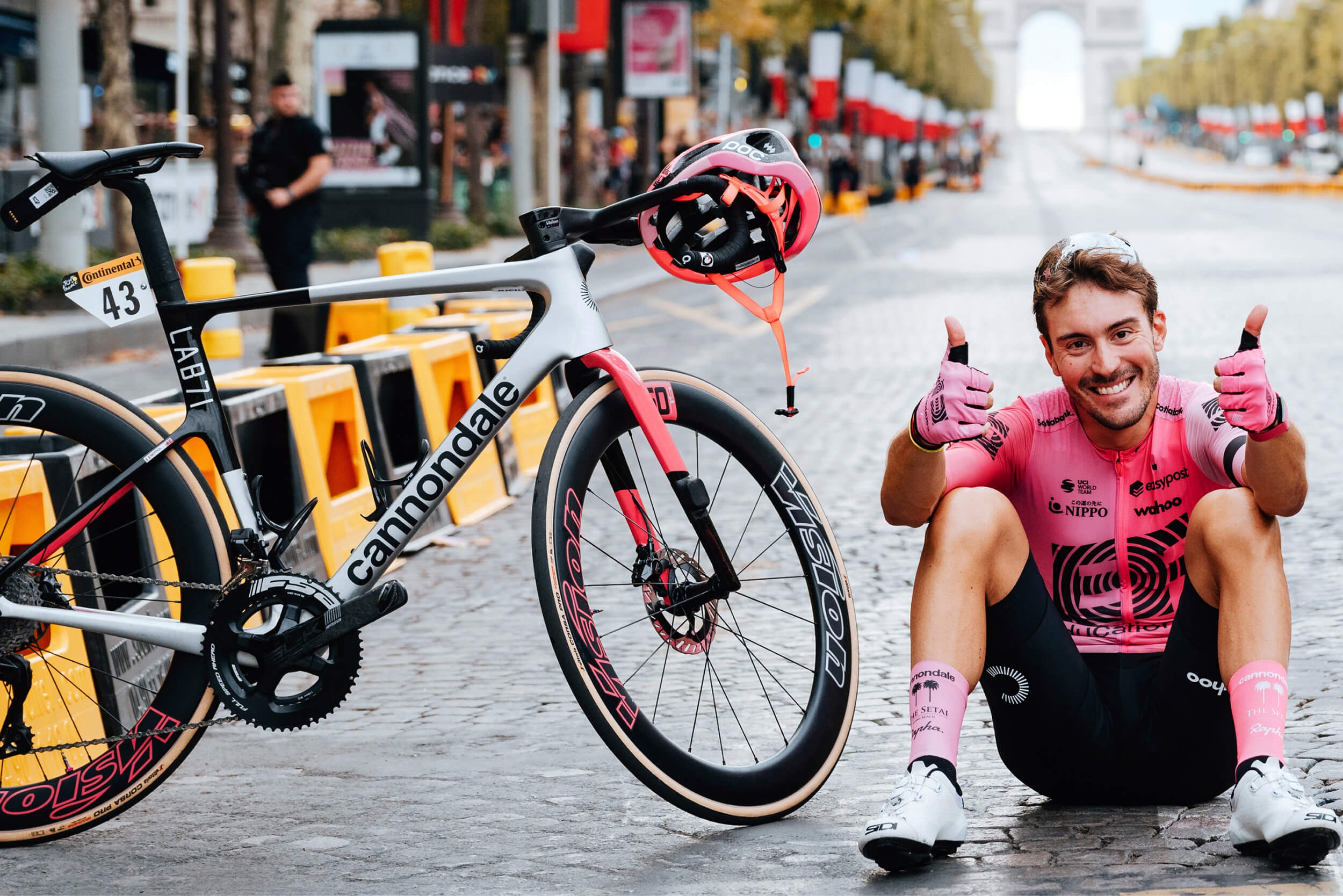Finding the right size road bike is paramount for comfort, performance, and injury prevention. When it comes to Cannondale bikes, understanding their size guide is the first step to ensuring you select a model that feels like an extension of your body. Whether you’re a seasoned cyclist or just starting your road riding journey, this guide will walk you through everything you need to know about Cannondale road bike sizing, helping you ride further, faster, and more comfortably.
Bike Size Versus Bike Fit: Understanding the Difference
It’s crucial to distinguish between bike size and bike fit. Think of bike size as the clothing size you choose – it’s a general dimension. Bike fit, on the other hand, is like tailoring – it’s the fine-tuning process of adjusting various components of your bike to match your unique body and riding style perfectly.
While a standard size chart can get you close, a professional bike fit elevates your riding experience. Cannondale designs their bikes with a broad range of adjustability, meaning that by following their size guidelines, most riders will find a comfortable starting point. However, for optimal performance and to prevent discomfort or injury, especially on longer rides, considering a professional bike fit is highly recommended. Consult your local Cannondale dealer to explore professional fitting options and personalize your new ride.
Demystifying Road Bike Sizing
When discussing road bike sizing, we’re referring to the frame size, not the wheel size. Unlike children’s bikes sized by wheel diameter, adult road bikes are categorized by frame dimensions. Virtually all adult road bikes, including racing bikes, endurance road bikes, cyclocross bikes, gravel bikes, and even electric road bikes, utilize standardized wheel sizes—primarily 700c (28”) or occasionally 650b (27.5”).
Historically, road bike frame sizes were indicated in centimeters (cm), roughly corresponding to the seat tube length. This measurement was relevant in the era of steel frames with traditional geometry. Modern Cannondale road bikes, however, largely feature compact or sloping frame geometries. This contemporary design, driven by advanced materials and manufacturing, results in more ergonomic frames. Consequently, the centimeter measurement on a modern bike is more of an approximate sizing indicator, relating to the traditional sizing concept. For example, a “56cm” Cannondale road bike might not have a 56cm measurement anywhere on the frame, but it will generally fit someone who would have ridden a 56cm traditional frame.
Notably, Cannondale gravel bikes often employ a different sizing convention, using clothing-style sizes like XS, S, M, L, XL. This approach, also common for mountain bikes, reflects the significant slope in the top tubes of these frames, providing more standover clearance. Regardless of the sizing system, Cannondale typically offers a wide range of sizes across their road bike models, accommodating riders from approximately 5’ (152cm) to over 6’6” (198cm). Always refer to the specific Cannondale size chart for the model you are interested in to find the most accurate recommendation.
Measuring Yourself for the Right Cannondale Road Bike Size
While your overall height is a starting point, your leg length, or inseam, is a more critical measurement for road bike sizing. Standover height, the clearance between the top tube and your body when standing over the bike, is directly related to your inseam.
To measure your inseam accurately for Cannondale bike sizing:
- Stand with your feet about 8-10 inches (20-25cm) apart on a flat surface.
- Measure the distance from the floor up to your crotch. Ensure you are standing straight and the measuring tape is vertical.
- For road bikes, you typically want 1-2 inches (2.5-5cm) of clearance for standover. Subtract this amount from your inseam measurement.
- Convert inches to centimeters by multiplying by 2.54 if needed.
Once you have your adjusted inseam measurement, navigate to the “Geometry” section on the Cannondale website page of the specific road bike model you’re interested in. Locate the “Standover” measurement in the geometry chart. Ideally, you should aim for a bike size where the standover height is close to your calculated inseam measurement.
The goal is to ensure comfortable standover clearance. You should be able to stand over the top tube with both feet flat on the ground and have that crucial 1-2 inches of clearance for safety and comfort.
Considering Additional Fit Factors
Often, your standover height might place you between two Cannondale frame sizes. This is where other anatomical factors and riding preferences come into play.
- Torso Length: If you have a longer torso relative to your height, you might lean towards the larger of the two sizes. Larger frames typically have longer top tubes, accommodating a longer reach. Conversely, a shorter torso might be better suited to the smaller size to avoid feeling stretched out.
- Arm Length and Flexibility: Similar to torso length, arm length and flexibility affect your reach to the handlebars. Less flexible riders or those with shorter arms might prefer a slightly smaller frame.
- Riding Style: Aggressive, race-oriented riders might prefer a slightly smaller, more agile frame, while endurance riders might prioritize a slightly larger, more stable and comfortable frame.
These nuances highlight the value of test riding. If possible, try out both sizes you are considering. Feel the difference in riding position and handling. This hands-on experience, combined with professional guidance, will refine your Cannondale size selection.
Fine-Tuning Your Cannondale Road Bike Fit
Once you’ve selected the correct Cannondale road bike size based on the size guide and your measurements, remember that fine-tuning is essential. Several adjustments can significantly improve your fit and comfort.
- Saddle Position: Saddle height is universally recognized as crucial, but fore-aft saddle position is equally important. Adjusting the saddle forward or backward on its rails can dramatically impact your weight distribution and comfort. If you find yourself constantly sliding forward on the saddle, try moving it forward slightly.
- Stem Adjustment: The stem connects the handlebars to the frame and influences your reach and riding posture. Stems are available in various lengths and angles. A stem change, even a small one, can make a significant difference in achieving a balanced and comfortable riding position on your Cannondale.
- Component Upgrades: Components like saddles are highly personal. Upgrading to a saddle that suits your anatomy and riding style can greatly enhance comfort, especially on longer rides.
While these adjustments can be made independently, a professional bike fit ensures a holistic approach, considering all aspects of your riding position and biomechanics. For a truly optimized Cannondale experience, professional fitting is an invaluable investment.
Let Cannondale Help You Find Your Perfect Bike
Still unsure about the ideal Cannondale road bike for you? Cannondale offers resources to simplify your bike selection process. Utilize the Bike Finder tool on their website for personalized recommendations. Ultimately, visiting a trusted Cannondale dealer and consulting with experienced professionals is the best path to confidently choosing the right size and model. They can provide expert advice, assist with test rides, and guide you through professional bike fitting options, ensuring your Cannondale road bike delivers miles of comfortable and exhilarating riding.

